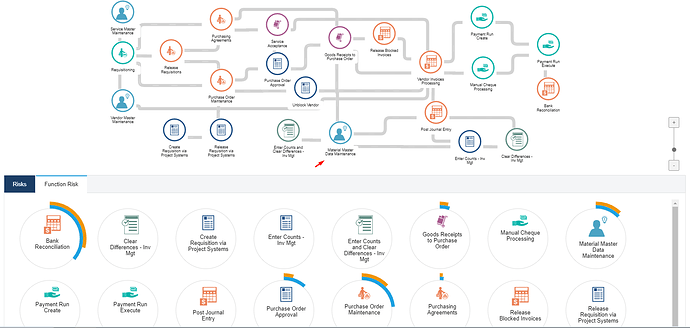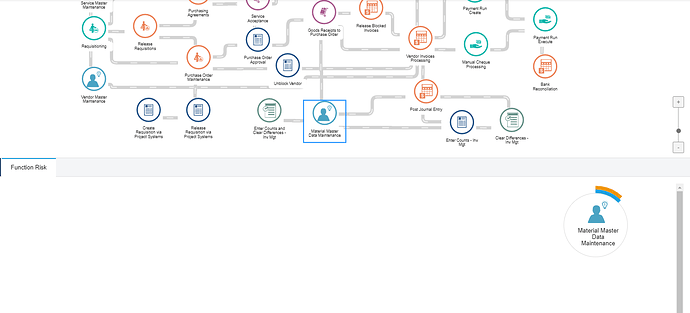Maybe.
Here’s a sample that does what I think you are asking for:
<!DOCTYPE html>
<html>
<head>
<meta charset="UTF-8">
<!-- Copyright 1998-2020 by Northwoods Software Corporation. -->
<script src="go.js"></script>
<script>
function init() {
var $ = go.GraphObject.make;
// initialize main Diagram
myDiagram =
$(go.Diagram, "myDiagramDiv",
{
contentAlignment: go.Spot.TopLeft,
layout: $(go.GridLayout)
});
myDiagram.nodeTemplate =
$(go.Node, "Auto",
$(go.Shape,
{ fill: "white", stroke: "gray", strokeWidth: 2 },
new go.Binding("stroke", "color")),
$(go.TextBlock,
{
margin: new go.Margin(5, 5, 3, 5), font: "10pt sans-serif",
minSize: new go.Size(16, 16), maxSize: new go.Size(120, NaN)
},
new go.Binding("text")),
{
click: function(e, node) {
if (e.diagram instanceof go.Palette) {
var color = node.data.color;
myDiagram.commit(function(diag) {
diag.nodes.each(function(n) { n.visible = (n.data.color === color); })
});
}
}
}
);
// initialize Palette
myPalette =
$(go.Palette, "myPaletteDiv",
{
nodeTemplateMap: myDiagram.nodeTemplateMap,
model: new go.GraphLinksModel([
{ text: "red node", color: "red" },
{ text: "green node", color: "green" },
{ text: "blue node", color: "blue" },
{ text: "orange node", color: "orange" }
]),
click: function(e) {
myDiagram.commit(function(diag) {
diag.nodes.each(function(n) { n.visible = true; })
});
}
});
// initialize Overview
myOverview =
$(go.Overview, "myOverviewDiv",
{
observed: myDiagram,
contentAlignment: go.Spot.Center
});
load();
}
// save a model to and load a model from Json text, displayed below the Diagram
function save() {
var str = myDiagram.model.toJson();
document.getElementById("mySavedModel").value = str;
}
function load() {
var str = document.getElementById("mySavedModel").value;
myDiagram.model = go.Model.fromJson(str);
}
</script>
</head>
<body onload="init()">
<div style="width: 100%; display: flex; justify-content: space-between">
<div style="display: flex; flex-direction: column; margin: 0 2px 0 0">
<div id="myPaletteDiv" style="flex-grow: 1; width: 100px; background-color: floralwhite; border: solid 1px black"></div>
<div id="myOverviewDiv" style="margin: 2px 0 0 0; width: 100px; height: 100px; background-color: whitesmoke; border: solid 1px black"></div>
</div>
<div id="myDiagramDiv" style="flex-grow: 1; height: 400px; border: solid 1px black"></div>
</div>
<div id="buttons">
<button id="loadModel" onclick="load()">Load</button>
<button id="saveModel" onclick="save()">Save</button>
</div>
<textarea id="mySavedModel" style="width:100%;height:200px">
{ "class": "go.GraphLinksModel",
"nodeDataArray": [
{"key":1, "text":"hello", "color":"green"},
{"key":2, "text":"world", "color":"red"},
{"key":3, "text":"how", "color":"blue"},
{"key":4, "text":"are", "color":"orange"},
{"key":5, "text":"you", "color":"green"},
{"key":6, "text":"today", "color":"red"}
]}
</textarea>
</body>
</html>

